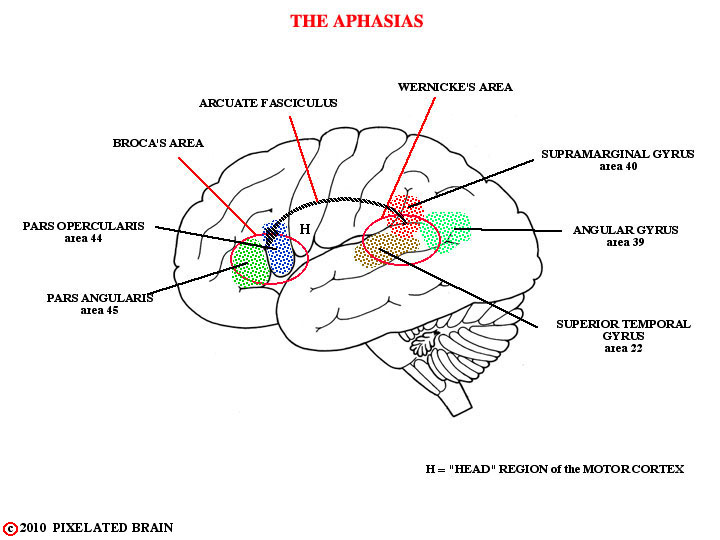MODULE 1 - SECTION 5- SURFACE ANATOMY of the CEREBRAL HEMISPHERE
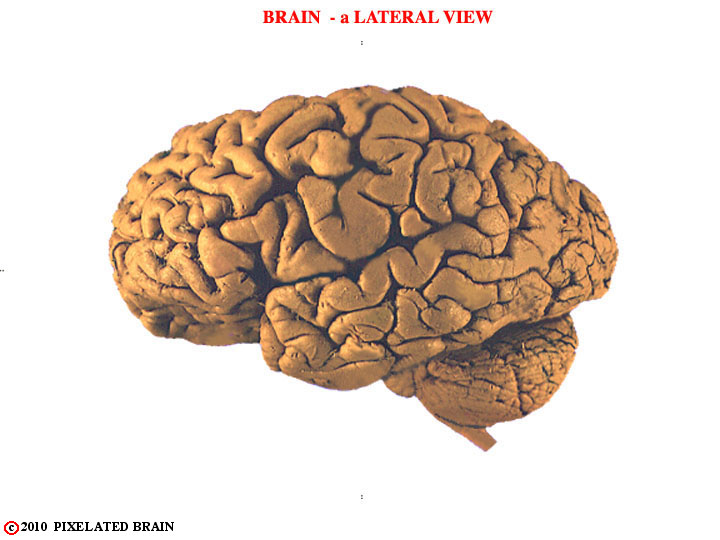
The meninges have been removed and we now look at the lateral surface of the brain. In this view we see the cerebral hemisphere, the brainstem and the cerebellum, but for now we will focus on the hemisphere. Clearly, there has to be a way to refer to different parts of this complex structure. We describe how it is done in the next few figures.
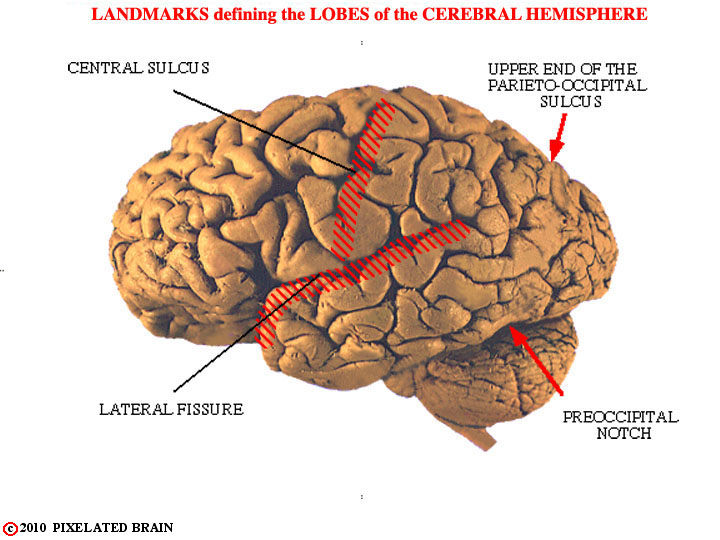
Here are some of these landmarks on a real brain.
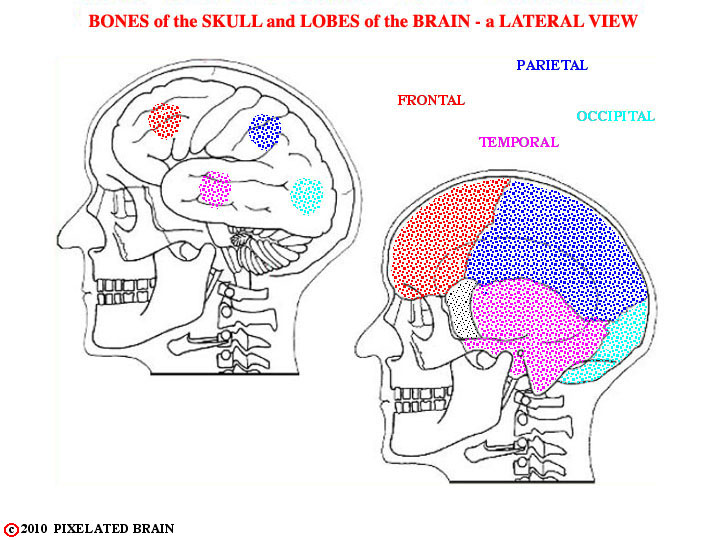
The starting point is to divide the hemisphere into four major lobes, which correspond roughly in name and position to the bones of the overlying skull.
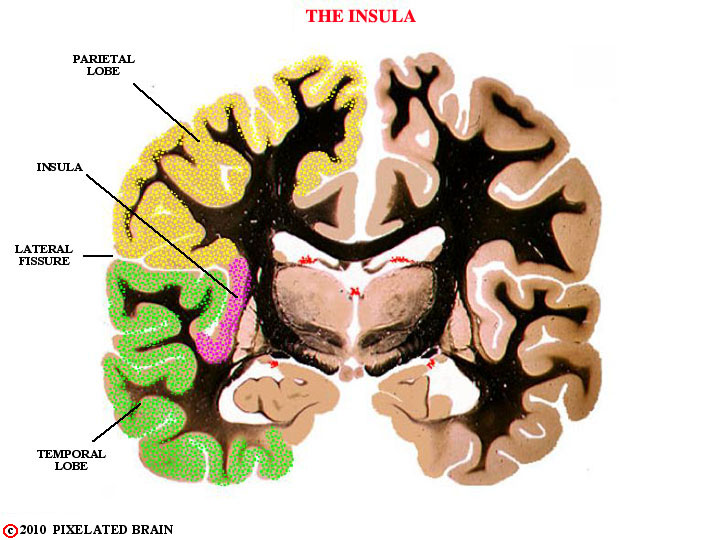
The insula is not truly an island. Its relationship to the lobes of the hemisphere is best revealed in a section such as this one.
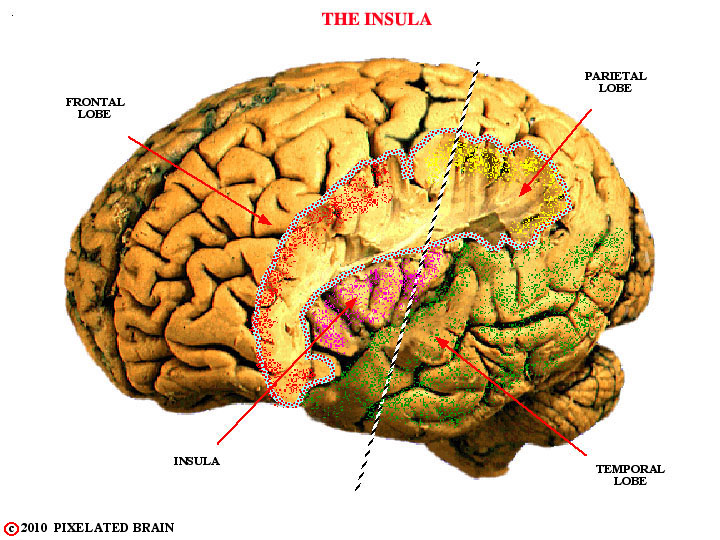
Migration of the frontal, parietal and temporal lobes has tended to bury an "island" of cortex within the depths of the lateral fissure . If parts of the frontal (red) and parietal (yellow) lobes are cut away this cortical area - the insula (violet) - is revealed, as shown here. The insula is not truly an island, however, and its relationship to the lobes of the hemisphere is best revealed by making a cut through the brain in the plane indicated by the line and looking at the surface of the sectioned tissue. We will see the section in the next view.
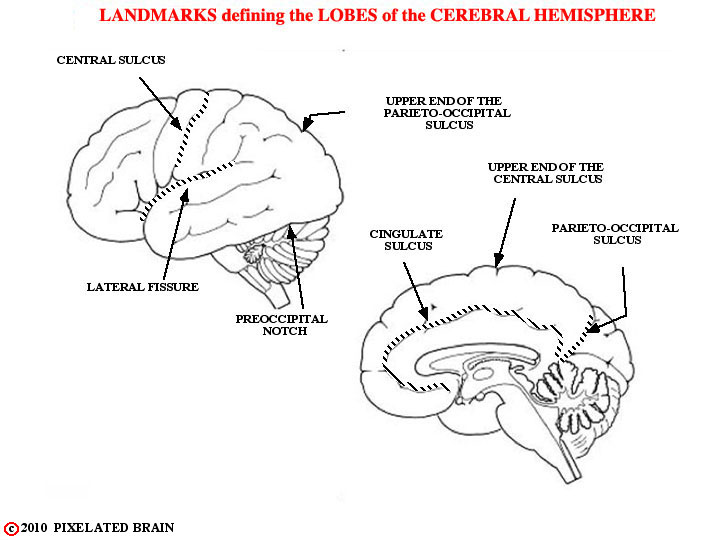
The landmarks used to establish the borders of each lobe are shown here. The central sulcus lies about halfway between frontal and occipital poles and is significantly deeper than adjacent sulci. The lateral fissure differs from a sulcus in that it was created as tissue migrated in an arc-like fashion to form the temporal lobe. The pre occipital notch is a rather predictable indentation in the surface of the brain, and the parieto-occipital sulcus is a very constant and deep sulcus, present on the medial surface of the hemisphere. The anterior border of the occipital lobe is a line drawn between the pre occipital notch and the upper end of the parieto-occipital sulcus.
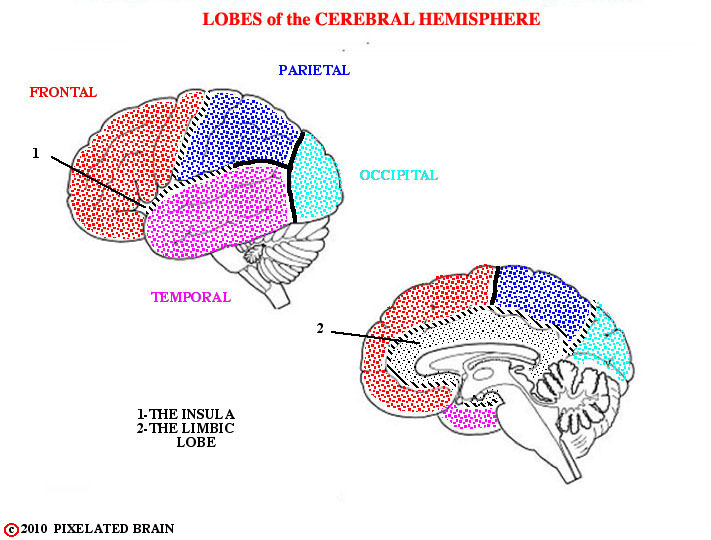
Anteriorly, the lateral fissure separates the temporal lobe from the frontal and parietal lobes; posteriorly, the line separating the temporal and parietal lobes is a somewhat arbitrary extension of the lateral fissure. Because of their unique geometry the insula and the limbic "lobe" to not fit into the four lobe scheme. As the name suggests, the insula is indeed an island of cortex that has been buried by the expanding frontal, parietal and temporal lobes; it shares borders with all three. The limbic "lobe" runs around the medial edge of the hemisphere, sharing borders with all four lobes. Because of its functional importance it is commonly called a lobe, though it hardly seems like one.
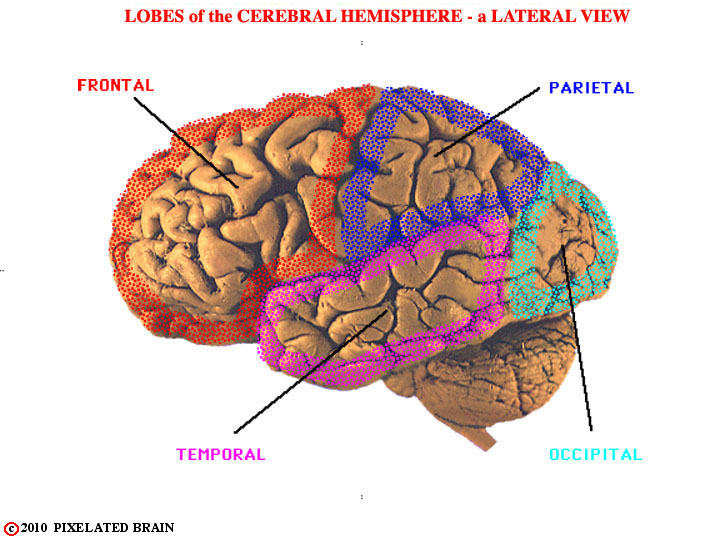
This view shows the general position of the four lobes present on the lateral surface of the hemisphere.
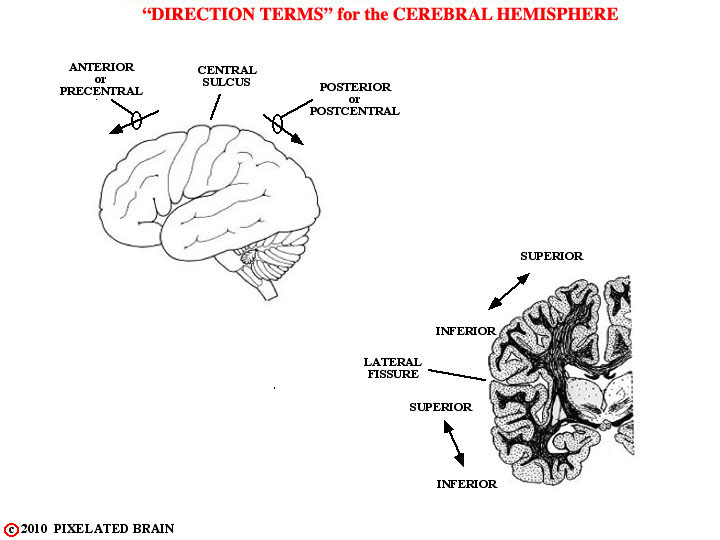
Before describing how each lobe is subdivided into gyri, we need to be clear on the way directions are specified when dealing with the surface of the hemisphere. The most commonly used terms are shown in this view.
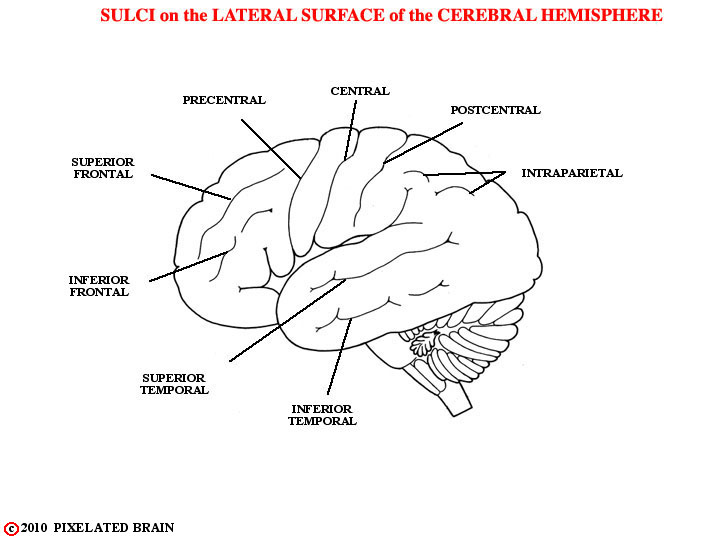
These are the named sulci.
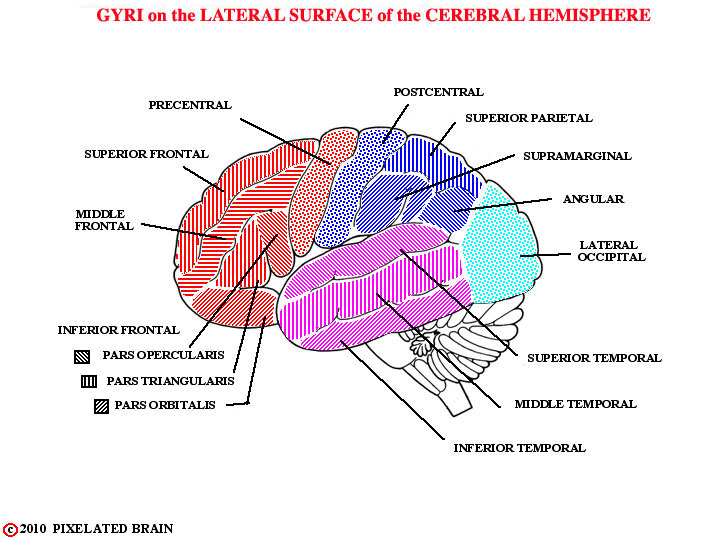
These are the named gyri.
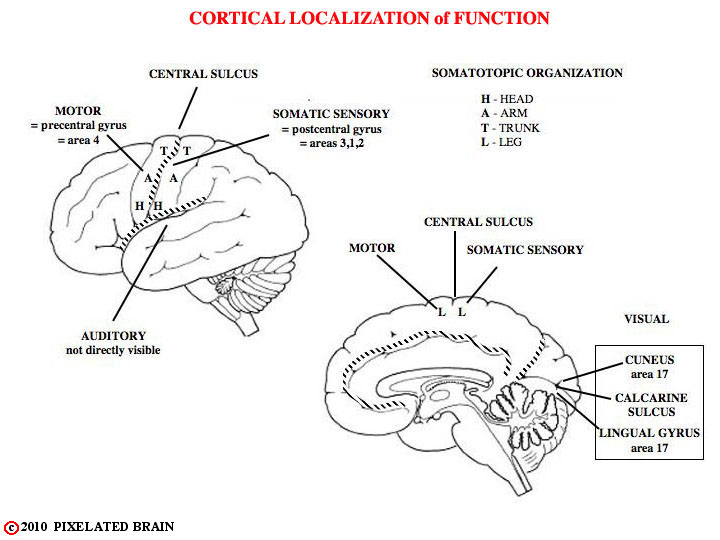
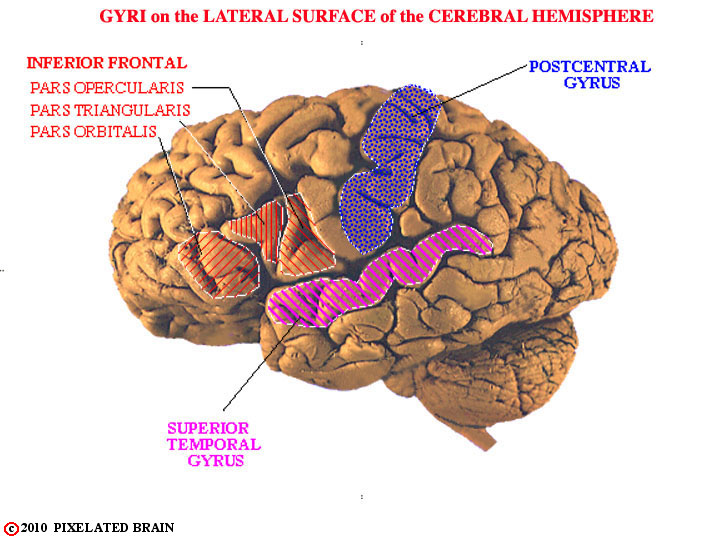
Most textbook figures imply that the pattern of gyri and sulci on the surface of the hemisphere is quite similar from one brain to the next. In reality, there is a great deal of variability between specimens. In the brain we looked at originally, for example, the central, post central and superior temporal sulci are rather clear, with the result that the post central gyrus and the superior temporal gyrus are easily identified, as shown here. In other brains, even the central sulcus (the most obvious of the three) can be difficult to identify.
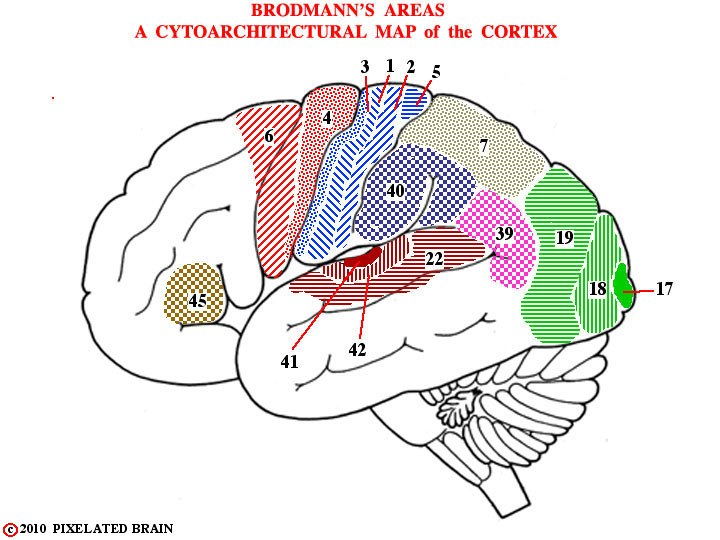
At this point, you are asking "Is that it? Do I have all the names I need to describe the surface of the cerebral cortex? If so, now tell me what each of these gyri actually does." Well, the gyri are a necessary start, but its not that simple (it never is). The gyri are useful landmarks for the neurosurgeon, the neuroradiologist and the neuropathologist and they are used in the reports that these specialists write - operative notes, and the like. But it turns out that the cellular region lying just deep to the surface of the hemisphere - the light area in view #5 - is organized into 6 layers and the thickness and cellular structure of these layers differs from one region to another. More than 100 years ago, a worker by the name of Brodman parcelled the surface of the cortex out into more than 50 areas, based on the destinctive cellular appearance of each, and his map, shown here, is used to this day in describing the functional organization of this region.
